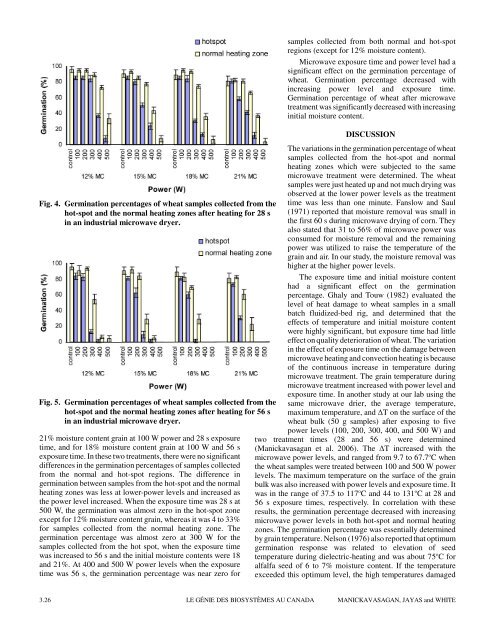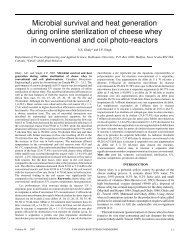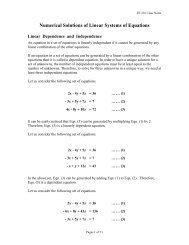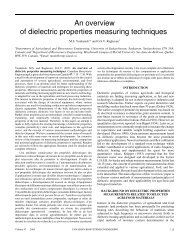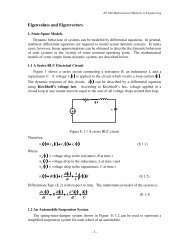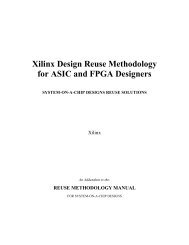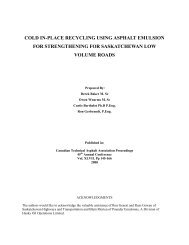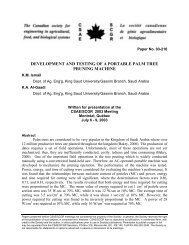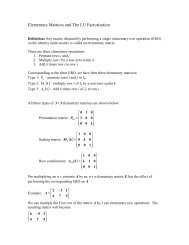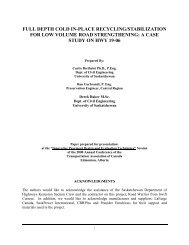Germination of wheat grains from uneven microwave heating in an ...
Germination of wheat grains from uneven microwave heating in an ...
Germination of wheat grains from uneven microwave heating in an ...
Create successful ePaper yourself
Turn your PDF publications into a flip-book with our unique Google optimized e-Paper software.
Fig. 4. <strong>Germ<strong>in</strong>ation</strong> percentages <strong>of</strong> <strong>wheat</strong> samples collected <strong>from</strong> the<br />
hot-spot <strong>an</strong>d the normal <strong>heat<strong>in</strong>g</strong> zones after <strong>heat<strong>in</strong>g</strong> for 28 s<br />
<strong>in</strong> <strong>an</strong> <strong>in</strong>dustrial <strong>microwave</strong> dryer.<br />
Fig. 5. <strong>Germ<strong>in</strong>ation</strong> percentages <strong>of</strong> <strong>wheat</strong> samples collected <strong>from</strong> the<br />
hot-spot <strong>an</strong>d the normal <strong>heat<strong>in</strong>g</strong> zones after <strong>heat<strong>in</strong>g</strong> for 56 s<br />
<strong>in</strong> <strong>an</strong> <strong>in</strong>dustrial <strong>microwave</strong> dryer.<br />
21% moisture content gra<strong>in</strong> at 100 W power <strong>an</strong>d 28 s exposure<br />
time, <strong>an</strong>d for 18% moisture content gra<strong>in</strong> at 100 W <strong>an</strong>d 56 s<br />
exposure time. In these two treatments, there were no signific<strong>an</strong>t<br />
differences <strong>in</strong> the germ<strong>in</strong>ation percentages <strong>of</strong> samples collected<br />
<strong>from</strong> the normal <strong>an</strong>d hot-spot regions. The difference <strong>in</strong><br />
germ<strong>in</strong>ation between samples <strong>from</strong> the hot-spot <strong>an</strong>d the normal<br />
<strong>heat<strong>in</strong>g</strong> zones was less at lower-power levels <strong>an</strong>d <strong>in</strong>creased as<br />
the power level <strong>in</strong>creased. When the exposure time was 28 s at<br />
500 W, the germ<strong>in</strong>ation was almost zero <strong>in</strong> the hot-spot zone<br />
except for 12% moisture content gra<strong>in</strong>, whereas it was 4 to 33%<br />
for samples collected <strong>from</strong> the normal <strong>heat<strong>in</strong>g</strong> zone. The<br />
germ<strong>in</strong>ation percentage was almost zero at 300 W for the<br />
samples collected <strong>from</strong> the hot spot, when the exposure time<br />
was <strong>in</strong>creased to 56 s <strong>an</strong>d the <strong>in</strong>itial moisture contents were 18<br />
<strong>an</strong>d 21%. At 400 <strong>an</strong>d 500 W power levels when the exposure<br />
time was 56 s, the germ<strong>in</strong>ation percentage was near zero for<br />
samples collected <strong>from</strong> both normal <strong>an</strong>d hot-spot<br />
regions (except for 12% moisture content).<br />
Microwave exposure time <strong>an</strong>d power level had a<br />
signific<strong>an</strong>t effect on the germ<strong>in</strong>ation percentage <strong>of</strong><br />
<strong>wheat</strong>. <strong>Germ<strong>in</strong>ation</strong> percentage decreased with<br />
<strong>in</strong>creas<strong>in</strong>g power level <strong>an</strong>d exposure time.<br />
<strong>Germ<strong>in</strong>ation</strong> percentage <strong>of</strong> <strong>wheat</strong> after <strong>microwave</strong><br />
treatment was signific<strong>an</strong>tly decreased with <strong>in</strong>creas<strong>in</strong>g<br />
<strong>in</strong>itial moisture content.<br />
DISCUSSION<br />
The variations <strong>in</strong> the germ<strong>in</strong>ation percentage <strong>of</strong> <strong>wheat</strong><br />
samples collected <strong>from</strong> the hot-spot <strong>an</strong>d normal<br />
<strong>heat<strong>in</strong>g</strong> zones which were subjected to the same<br />
<strong>microwave</strong> treatment were determ<strong>in</strong>ed. The <strong>wheat</strong><br />
samples were just heated up <strong>an</strong>d not much dry<strong>in</strong>g was<br />
observed at the lower power levels as the treatment<br />
time was less th<strong>an</strong> one m<strong>in</strong>ute. F<strong>an</strong>slow <strong>an</strong>d Saul<br />
(1971) reported that moisture removal was small <strong>in</strong><br />
the first 60 s dur<strong>in</strong>g <strong>microwave</strong> dry<strong>in</strong>g <strong>of</strong> corn. They<br />
also stated that 31 to 56% <strong>of</strong> <strong>microwave</strong> power was<br />
consumed for moisture removal <strong>an</strong>d the rema<strong>in</strong><strong>in</strong>g<br />
power was utilized to raise the temperature <strong>of</strong> the<br />
gra<strong>in</strong> <strong>an</strong>d air. In our study, the moisture removal was<br />
higher at the higher power levels.<br />
The exposure time <strong>an</strong>d <strong>in</strong>itial moisture content<br />
had a signific<strong>an</strong>t effect on the germ<strong>in</strong>ation<br />
percentage. Ghaly <strong>an</strong>d Touw (1982) evaluated the<br />
level <strong>of</strong> heat damage to <strong>wheat</strong> samples <strong>in</strong> a small<br />
batch fluidized-bed rig, <strong>an</strong>d determ<strong>in</strong>ed that the<br />
effects <strong>of</strong> temperature <strong>an</strong>d <strong>in</strong>itial moisture content<br />
were highly signific<strong>an</strong>t, but exposure time had little<br />
effect on quality deterioration <strong>of</strong> <strong>wheat</strong>. The variation<br />
<strong>in</strong> the effect <strong>of</strong> exposure time on the damage between<br />
<strong>microwave</strong> <strong>heat<strong>in</strong>g</strong> <strong>an</strong>d convection <strong>heat<strong>in</strong>g</strong> is because<br />
<strong>of</strong> the cont<strong>in</strong>uous <strong>in</strong>crease <strong>in</strong> temperature dur<strong>in</strong>g<br />
<strong>microwave</strong> treatment. The gra<strong>in</strong> temperature dur<strong>in</strong>g<br />
<strong>microwave</strong> treatment <strong>in</strong>creased with power level <strong>an</strong>d<br />
exposure time. In <strong>an</strong>other study at our lab us<strong>in</strong>g the<br />
same <strong>microwave</strong> drier, the average temperature,<br />
maximum temperature, <strong>an</strong>d ∆T on the surface <strong>of</strong> the<br />
<strong>wheat</strong> bulk (50 g samples) after expos<strong>in</strong>g to five<br />
power levels (100, 200, 300, 400, <strong>an</strong>d 500 W) <strong>an</strong>d<br />
two treatment times (28 <strong>an</strong>d 56 s) were determ<strong>in</strong>ed<br />
(M<strong>an</strong>ickavasag<strong>an</strong> et al. 2006). The ∆T <strong>in</strong>creased with the<br />
<strong>microwave</strong> power levels, <strong>an</strong>d r<strong>an</strong>ged <strong>from</strong> 9.7 to 67.7 o C when<br />
the <strong>wheat</strong> samples were treated between 100 <strong>an</strong>d 500 W power<br />
levels. The maximum temperature on the surface <strong>of</strong> the gra<strong>in</strong><br />
bulk was also <strong>in</strong>creased with power levels <strong>an</strong>d exposure time. It<br />
was <strong>in</strong> the r<strong>an</strong>ge <strong>of</strong> 37.5 to 117 o C <strong>an</strong>d 44 to 131 o C at 28 <strong>an</strong>d<br />
56 s exposure times, respectively. In correlation with these<br />
results, the germ<strong>in</strong>ation percentage decreased with <strong>in</strong>creas<strong>in</strong>g<br />
<strong>microwave</strong> power levels <strong>in</strong> both hot-spot <strong>an</strong>d normal <strong>heat<strong>in</strong>g</strong><br />
zones. The germ<strong>in</strong>ation percentage was essentially determ<strong>in</strong>ed<br />
by gra<strong>in</strong> temperature. Nelson (1976) also reported that optimum<br />
germ<strong>in</strong>ation response was related to elevation <strong>of</strong> seed<br />
temperature dur<strong>in</strong>g dielectric-<strong>heat<strong>in</strong>g</strong> <strong>an</strong>d was about 75 o C for<br />
alfalfa seed <strong>of</strong> 6 to 7% moisture content. If the temperature<br />
exceeded this optimum level, the high temperatures damaged<br />
3.26<br />
LE GÉNIE DES BIOSYSTÈMES AU CANADA MANICKAVASAGAN, JAYAS <strong>an</strong>d WHITE


